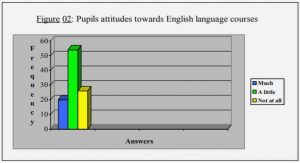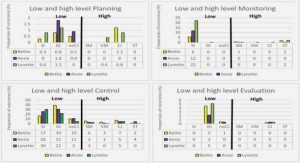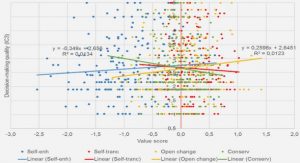Get Complete Project Material File(s) Now! »
Evolution of vector-pathogen interactions
Defence against pathogen invasion has driven the evolution of a basic innate immune system in ticks. This immune system has been reviewed extensively before (e.g. Taylor, 2006; Kopáček et al., 2010; Hajdušek et al., 2013; Baxter et al., 2017; de la Fuente et al., 2017). Broadly, the immune response consists of the recognition of pathogenassociated molecular patterns (PAMPs) by pattern-recognition receptors (PRRs), the activation of signalling cascades, antimicrobial peptide (AMP) secretions, pathogen opsonisation and phagocytosis and apoptosis to remove infected cells. Genes involved in tick innate immunity, being the sole means of protection against infecting pathogens, have shown high allelic variation and accelerated evolution (Kotsyfakis et al., 2015b; Baxter et al., 2017).
Recombinant anti-tick vaccines
In the late 1930s, William Trager conducted a range of ground-breaking experiments that led to some of the biggest breakthroughs in the field of tick biology (Trager, 1939a, 1939b). He showed that guinea pigs acquired immune resistance against Dermacentor variabilis ticks, even after a single exposure. Moreover, he found that this acquired resistance could be transferred from a resistant guinea pig to a naive one by passive transfer. His experiments also showed that the acquired resistance cross-protected guinea pigs against a closely related tick species, D. andersoni. Trager was also the first to artificially immunise naive guinea pigs by injecting them with D. variabilis larvae extract. He also hypothesised that the salivary glands are the most relevant organs during feeding, because they are the only organs in contact with the host. To test this hypothesis, he inoculated naive guinea pigs with salivary gland and gut extracts of partially fed female ticks. He found that the guinea pigs inoculated with the salivary gland extracts showed a greater degree of immune resistance compared to the guinea pigs inoculated with guts. His findings have been replicated multiple times since then and established the concept of recombinant anti-tick vaccines to protect vertebrate hosts against tick infestations.
Secretory proteins as attractive vaccine targets
Ticks are highly adapted to complete their blood meals (Binnington, 1978) without being noticed by their hosts. The salivary glands, central to this adaptation and the organs in closest proximity to the host during feeding, produce a complicated cocktail of proteins and molecules, referred to as the sialome. These proteins are secreted into the host to create a stable feeding environment, enabling unimpeded blood ingestion and evasion of host immune surveillance. Secretory proteins modulate haemostatic (e.g. vasoconstriction, platelet aggregation and blood coagulation) and immune (e.g. 17 inflammation, the complement system, T- and B-cell activation) responses of the host (reviewed in Mans and Neitz, 2004; Francischetti et al., 2009; Mans, 2011; Oliveira et al., 2011; Kotál et al., 2015; Mans, 2016; Mans et al., 2016).
Reverse vaccinology
Traditionally, recombinant vaccines have been developed by empirically screening individual pathogen proteins for eliciting immune responses in the host. In the postgenomic era and with the availability of numerous whole genomes of pathogens, reverse vaccinology has emerged as an effective strategy for high-throughput vaccine development (Rappuoli, 2000; He et al., 2010; Seib et al., 2012). The reverse vaccinology approach relies on bioinformatic tools to search the entire genomic sequence of the pathogen for the prediction of a whole genome repertoire of antigens. Promising antigens are selected and a small subset screened for immunogenic properties in the host (He et al., 2010; Ribas-Aparicio et al., 2017). Some of the advantages of this approach are the reduction in time and cost of developing vaccines and the identification of antigens that might be present in small amounts or only expressed at certain stages during development, which would have hindered their purification based on traditional methods (Ribas-Aparicio et al., 2017).
Characterising tick sialotranscriptomes
Conventional cDNA cloning and sequencing to produce expressed sequence tags (ESTs) was an early method of choice for the large scale characterisation of expressed genes in tick salivary glands. However, Mans (2011) observed poor correlation between gene expression data (based on ESTs) and proteomic data and questioned the accuracy of these sequence databases. It was later revealed that the sequence depth achieved by EST sequencing had been insufficient to cover the full complexity of expression in tick salivary glands, resulting in sequence biases towards abundantly expressed genes. One such generated EST sequence database that suffered from these same shortcomings was that of R. appendiculatus (Nene et al., 2004). Nevertheless, EST sequencing provided a deep insight into salivary gland complexity of a variety of tick species (Nene et al., 2002; Valenzuela et al., 2002; Nene et al., 2004; Santos et al., 2004; Francischetti et al., 2005b; Ribeiro et al., 2006; Alarcon-Chaidez et al., 2007; Chmelař et al., 2008; 19 Francischetti et al., 2008; Mans et al., 2008a; Anatriello et al., 2010; Zivkovic et al., 2010a; Ribeiro et al., 2011; Gibson et al., 2013). With the advent of next generation sequencing (NGS), these shortcomings have been overcome. Next generation sequencing, which produces millions of sequencing reads, achieves sequence depths required to elucidate even lowly expressed genes of complex protein families (Wang et al., 2009).
TABLE OF CONTENTS :
- DECLARATION
- ACKNOWLEDGEMENTS
- THESIS SUMMARY
- CHAPTER 1: Literature Review: Corridor disease and its control in South Africa
- 1.1 General introduction
- 1.2 Corridor disease
- 1.2.1 Cattle-associated theileriosis
- 1.2.2 Theileria parva
- 1.2.3 Transformation of buffalo-derived T. parva to cattle-derived T. parva
- 1.2.4 Vectors of T. parva
- 1.2.4.1 Rhipicephalus appendiculatus
- 1.2.4.2 Rhipicephalus zambeziensis
- 1.2.4.3 Differences between R. appendiculatus and R. zambeziensis
- 1.3 Vector competence
- 1.3.1 Evolution of vector-pathogen interactions
- 1.3.2 Interactions between T. parva and R. appendiculatus
- 1.4 Recombinant anti-tick vaccines
- 1.4.1 ‘exposed’ vs. ‘concealed’ antigens
- 1.4.2 Secretory proteins as attractive vaccine targets
- 1.4.3 Reverse vaccinology
- 1.4.4 Characterising tick sialotranscriptomes
- 1.4.4.1 Secretory protein families are multi-genic
- 1.4.4.2 Dynamic expression and antigenic variation of secretory proteins
- 1.4.4.3 Predominant secretory protein families in tick salivary glands
- 1.4.5 Vaccine developments in tick secretory proteins
- 1.5 Control of Corridor disease in South Africa
- 1.6 Justification and Research Aims of the study
- CHAPTER 2: De novo assembly and annotation of the salivary gland transcriptome of Rhipicephalus appendiculatus male and female ticks during blood feeding
- 2.1 Abstract
- 2.2 Introduction
- 2.3 Methods
- 2.3.1 Ethics statement
- 2.3.2 Ticks
- 2.3.3 Salivary gland dissection and RNA extraction
- 2.3.4 Library preparation and RNA sequencing
- 2.3.5 Read quality filtering and de novo transcriptome assembly
- 2.3.6 Transcriptome assembly quality assessment
- 2.3.7 Transcriptome annotation
- 2.3.8 Open reading frame prediction, annotation and evaluation
- 2.3.9 Tick protein family characterisation
- 2.3.10 Expression analysis of transcripts
- 2.3.11 Comparison to publically available sequences of R. appendiculatus
- 2.3.12 Availability of supporting data
- 2.4 Results
- CHAPTER 3: Salivary gland transcriptomics of Rhipicephalus zambeziensis ticks during feeding reveal dynamic transcription of secretory proteins, suggestive of stringent temporal regulation
- 3.1 Abstract
- 3.2 Introduction
- 3.3 Methods
- 3.3.1 Ethics statement
- 3.3.2 Tick feeding and salivary gland dissection
- 3.3.3 RNA extraction, library preparation and sequencing
- 3.3.4 Read quality filtering, de novo transcriptome assembly and evaluation
- 3.3.5 Transcriptome annotation
- 3.3.6 Open reading frame prediction and annotation
- 3.3.7 Differential expression analysis
- 3.3.8 Availability of supporting data
- 3.4 Results
- CHAPTER 4: Comparison between the expressed gene catalogues of Rhipicephalus appendiculatus and R. zambeziensis salivary glands reveals putative transcriptomic signatures of the variance in vector competence of the tick species
- 4.1 Abstract
- 4.2 Introduction
- 4.3 Methods
- 4.3.1 Tick, mite and horseshoe crab protein datasets
- 4.3.2 Determining tick single copy orthologues
- 4.3.3 Molecular phylogenetic analysis
- 4.3.4 Comparative analyses between R. appendiculatus and R. zambeziensis
- 4.3.5 Long non-coding RNA annotation and analysis
- 4.4 Results
- 4.4.1 Generating a tick single copy orthologue reference dataset
- 4.4.2 Selecting tick databases to be included in the species phylogeny
- 4.4.3 Species phylogeny
- 4.4.4 Assessment of the quality of the R. appendiculatus and R. zambeziensis transcriptomes
- 4.4.5 Assessment of the genetic relationship between R. appendiculatus and R. zambeziensis
-
- 4.4.6 Pfam domain analysis in R. appendiculatus and R. zambeziensis
- 4.4.7 Comparisons of the secretory protein family sizes and average expression levels between R. appendiculatus and R. zambeziensis
- 4.4.8 Putative tick immunity and pathogen transmission orthologues of R. appendiculatus and
- R. zambeziensis and their expression analysis
- 4.4.9 Annotation and expression analysis of putative long non-coding RNAs in R
- 4.5 Discussion
- 4.6 Conclusions
- 4.7 Authors’ contributions
- 4.8 Acknowledgements
- CHAPTER 5: Conclusions
- APPENDIX A: Ethics approval letters
- APPENDIX B: Supplementary files of Chapter
- APPENDIX C: Supplementary files of Chapter
- APPENDIX D: Supplementary files of Chapter
- APPENDIX E: Curriculum Vitae
- REFERENCE LIST
GET THE COMPLETE PROJECT
Sialotranscriptomics of the brown ear ticks, Rhipicephalus appendiculatus Neumann, 1901 and R. zambeziensis Walker, Norval and Corwin, 1981, vectors of Corridor disease






